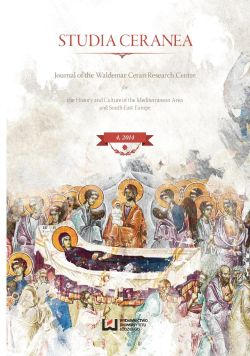Обрядовые уклонения и дурные привычки латинских еретиков в византийско- славянской полемической литературе Средневековья
Ritual deviations and bad habits of the ‘Latin heretics’ in Byzantine and Slavic polemical literature of the Middle Ages
Author(s): Angel Nikolov, Kamen StanevSubject(s): Archaeology, Cultural history, History of ideas, Other Language Literature
Published by: Wydawnictwo Uniwersytetu Łódzkiego
Keywords: Orthodox Christianity; Orthodox anti-latin polemics; medieval polemical texts; Orthodox identity; Orthodox-Catholic relations; religious dialogue
Summary/Abstract: The paper discusses the differences between Eastern and Western Christians during the Middle Ages through the prism of the lists of ritual deviations and bad habits of the ‘Latin heretics’, which were circulated in Byzantium in the second half of the 12th century (following the Great Schism of 1054). The translations and revisions of these lists remained popular among the Orthodox Christians in the Balkans and Eastern Europe up until the end of the 17th century. Special attention has been given to the reception among the Slavs of two Byzantine accusations levelled on the westerners – (1) that their priests shave; (2) that they eat various ‘unclean’ animals and creatures. The examples of the peculiar mundanity of the religious dialogue and polemics analysed in the paper suggest that this was a trend resulting from the ambition of the Orthodox societies in the Balkans and Eastern Europe to strengthen through various means their ethnic and religious identity in the context of the fierce political and confessional confrontation with the Catholic world of Western Europe. Also highlighted is the need for the research of medieval polemical texts to embrace the archaeological, ethnological and folkloristic evidence, which would allow us to clarify the sources and trends in the development and transformation of the key features of the identity of Slavic Orthodox societies during the Middle Ages and Modernity.
- Issue Year: 2014
- Issue No: 4
- Page Range: 125-139
- Page Count: 15
- Language: Russian

